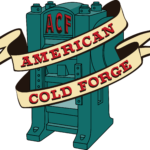In the manufacturing industry, methods and techniques continuously evolve. Industry leaders often face choices between cold forming and traditional forging methods. In this blog post, we aim to conduct a practical comparison between cold forming and traditional forging, focusing on their unique benefits and applications while explaining why American Cold Forge is a reliable choice in this sector.
Defining the Methods: Let’s begin by briefly defining the two manufacturing processes in question:
- Cold Forming: Cold forming, also known as cold forging, shapes metal at or slightly above room temperature using high pressure to maintain material strength and durability.
- Traditional Forging: Traditional forging, or hot forging, involves heating metal to high temperatures before shaping it, reducing the force required and enhancing ductility.
Comparative Analysis: Benefits and Limitations
To make informed decisions, it’s essential to understand the unique benefits and limitations of each process. Here’s a breakdown of the fundamental differences:
Material Efficiency:
- Cold Forming: Generally more material-efficient with minimal waste generation.
- Traditional Forging: May result in more material wastage due to scaling and trimming processes.
Surface Finish:
- Cold Forming: Often produces a superior surface finish, reducing the need for additional machining.
- Traditional Forging: May require extra machining and finishing steps for a smooth surface.
Structural Integrity:
- Cold Forming: Provides excellent grain flow, enhancing component structural integrity.
- Traditional Forging: While strong, the grain flow might be less uniform compared to cold forging.
Production Speed:
- Cold Forming: Tends to offer faster production cycles due to the absence of heating phases.
- Traditional Forging: Production speed might be slower due to the heating requirement.
At American Cold Forge, we specialize in cold forging, aligning with our commitment to efficiency, quality, and innovation. Here’s why we excel among cold forming companies:
The American Cold Forge Approach:
- Technological Advancements: We invest in the latest technology to enhance the efficiency and precision of our cold forging processes.
- Sustainability: Our approach prioritizes sustainability, as cold forging allows for greater material efficiency and reduced energy consumption.
- Customization: Expertise in cold forging enables us to offer customized solutions for various industries and applications.
- Quality Assurance: We adhere to strict quality control measures, ensuring that every product leaving our facility meets the highest standards.
The comparison between cold forming and traditional forging reveals unique benefits and applications for each process. American Cold Forge champions cold forming, integrating innovation, efficiency, and sustainability into every component we produce.
Join us as we push the boundaries of manufacturing, offering products that excel in quality and are crafted with the future in mind.
